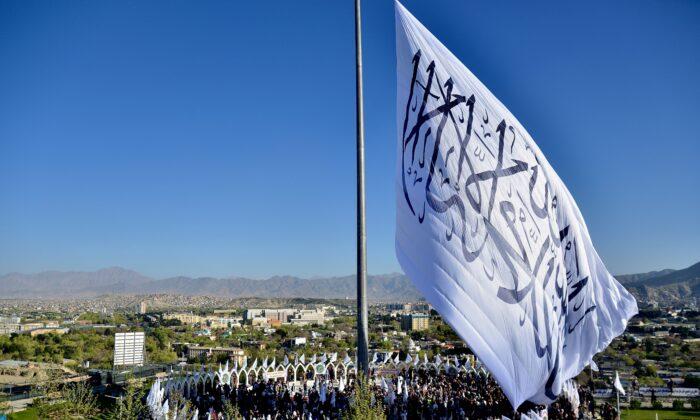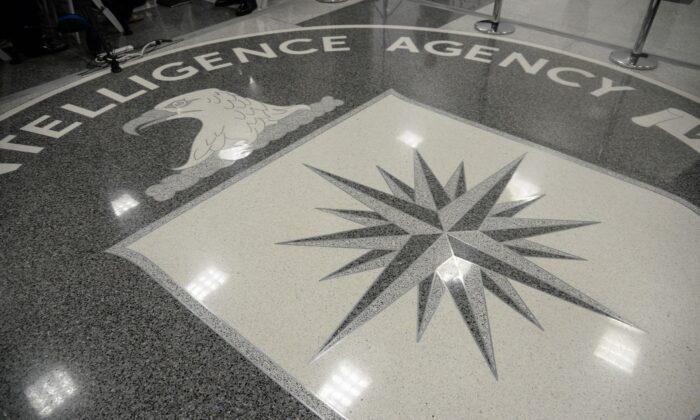Commentary
A Biden administration would mean that plans for expanding the U.S. Navy to 355 commissioned vessels from the current 293, not to mention the 500-ship plan recently unveiled by ousted Defense Secretary Mark Esper, wouldn’t happen.
That would endanger the Navy, which still reels from the disastrous consequences of Obama-era budget sequestration and incompetent bureaucracy.
Democrats on Capitol Hill have no interest in the plan, and likely neither would Joe Biden. House Armed Services Committee Chairman Adam Smith (D-Wash.) noted recently that the left-wing of his party would want to cut defense spending to pay for other programs.
“I was not a fan of the 355-ship Navy, because what does that even mean? What we need to focus on is capabilities. What are we trying to accomplish?” Smith
said last month in a video conference sponsored by the Center for New American Security, after previously stating, “I don’t think it’s achievable. The size of China. The size of Russia.”
“If we want to look like we’re tough, well, 500 is more than 355, so by definition that’s tougher, right?” he said. “No, capability is what matters. What are you trying to accomplish?”
A succinct rebuttal to Smith is that the Navy is overstretched and underfunded. A larger fleet combined with adequate funding could relieve significant pressure on the existing fleet due to wear and tear, as well as increase the Navy’s capabilities against Russia, China, and Iran.
China currently has 350 ships in its fleet, in contrast to 293 active U.S. Navy ships. It has the largest fleet in the world in terms of numbers and tonnage, and that continues to increase. Its current strategy includes (
pdf) a robust program for building submarines, surface combatants, amphibious warfare ships, aircraft carriers, and auxiliary ships. At the current rate of ship construction, China
could have 425 ships by 2030.
The Chinese regime launched its first amphibious assault ship last summer, likely with Taiwan in its crosshairs.
Obama-era sequestration has proven disastrous.
“When the Navy had 600 ships, about 100 were at sea at any given time. With half as many ships, the Navy still keeps about 100 at sea. In other words, as the Navy shrunk its fleet, it increased the workload on its sailors,” ProPublica
said in a February 2019 article.
Poor funding of the Navy has resulted in longer tours of duty for its workhorse Arleigh Burke-class destroyers and inadequate funding for its ship-maintenance facilities. A now-deleted declassified secret report by the Pentagon’s inspector general, recovered by the Center for Security Policy (
pdf), found 10 incidents involving its surface ships between 2012 and 2017, including four involving Arleigh Burke-class ships; 67 are currently in the fleet.
These incidents followed the passage of the Budget Control Act of 2011, aka sequestration. Adm. Michelle Howard
warned in 2016 that sequestration endangered the fleet. Deployments were cut and maintenance periods were shifted as a direct result.
ProPublica
noted that the Navy faced a shortage of sailors, and its ships were falling apart due to the “bruising” pace of operations. Budget cuts and a drive for “efficiency” resulted in decreased manpower that combined with poor leadership to create disastrous results. The Pentagon Inspector General’s report found likewise (
pdf).
“The very top of the Navy was consumed with buying new, more sophisticated ships, even as its sailors struggled to master and hold together those they had,” ProPublica said.
This mentality resulted in inadequate training that proved responsible for the collisions of the USS John S. McCain and USS Fitzgerald with merchant ships. The Ticonderoga-class cruiser USS Antietam
ran aground in Tokyo Bay in January 2017, pouring hundreds of gallons of oil into the water and damaging the ship’s propellers.
Such problems continue. The USS Stout returned from a 215-day deployment last month. Reports noted that morale hit a low point. Ship maintenance was challenged.
“The fighting ship looks like a set from a dystopian naval thriller, streaked in rust, her hull dinged and battered from the hard deployment,” defense analyst Tyler Rogoway
wrote.
The Trump administration’s plans for an expanded force would relieve the pressure created by the Pentagon bean counters’ desire to put costs before strategy. Having a larger fleet supported by a larger force means greater flexibility in terms of rotating assets.
The Senate version of the FY 2021 National Defense Authorization Act authorizes $21.3 billion for shipbuilding (
pdf). This includes two Columbia-class ballistic missile submarines; three San Antonio-class amphibious ships; and one America-class assault ship.
The administration’s Battle Force 2045 plan calls for the expansion of the Navy’s fleet of attack submarines, buying three attack subs annually. At the end, the inventory would
increase to 70–80 in 2045 from 51 currently.
Sustaining this goal will
ensure that the Navy’s overwhelming advantages are not eroded by China’s buildup and any future Russian expansion.
U.S. naval dominance is a key to keeping the peace. Deterrence is the name of the game, but Biden has
never understood this factor. During the Cold War, he was more concerned with appeasing the Kremlin than with the United States gaining diplomatic leverage via overwhelming American military superiority. He opposed many major weapons systems that still are in use today.
Peace comes through strength, not appeasement. And that can be realized by increasing the size of the Navy budget to ensure it has adequate manpower and surface assets.
John Rossomando is a senior analyst for defense policy at the Center for Security Policy, and served as a senior analyst for counterterrorism at The Investigative Project on Terrorism for eight years.
Views expressed in this article are opinions of the author and do not necessarily reflect the views of The Epoch Times.





